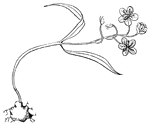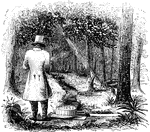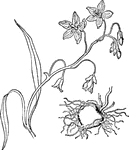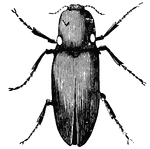
Lightning Spring Beetles
Beetles form a large group of insects that number over 300,000 species. They all have hard wings which…

Peacock
At the commencement of spring the male displays to the females all the splendor of his plumage; he struts,…

Venus Fly Trap Leaf
Here is a leaf of the Venus's fly trap which is a spring trap for flies and other insects. Here you…

Venus Fly Trap Leaf
Here is a leaf of the Venus's fly trap which is a spring trap for flies and other insects. The two parts…
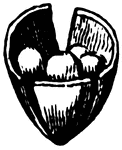
Claytonia Pod
Ripe pod of Claytonia or Spring Beauty, cut across, and splitting into three valves (Gray, 1858).
Spring Scales
Spring scales are used to weigh articles in which a high degree of exactness is not required. Spring…
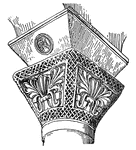
Impost Cap
Impost cap from St. Vitale. The impost cap (or impost-block) was interposed between the capital and…

Battle of Mill Spring
"Battle of Mill Spring, on the Cumberland River, near Jamestown, between a confederate force, 8,000…
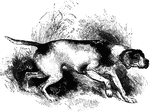
Pointer
"The pointer is the off-spring of the fox-hound and spaniel, and presents a remarkable instance of a…

Thoroughfare Gap
"Thoroughfare Gap, Va., a pass in the mountains on the Manassas Gap Railroad, near Strasburg, held by…

General Francis C. Barlow
"General Barlow, born in Brooklyn, N. Y., October 18th, 1834, was graduated at Harvard in 1855. In 1861…
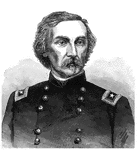
General Gouverneur K. Warren
"General Warren, born in Cold Spring, N. Y., January 8th, 1830, died in Newport, R. I., August 8th,…

Battle of Poplar Spring
"Grant's movements south of the James- Battle of Poplar Spring Church- gallant charge of a part of the…

Battle of Poplar Spring Church
"Grant's movements south of the James- Battle of Poplar Spring Church- the Ninth Corps passing Poplar…

Indian Pangolin
"Its head is small, pointed, and conic; muzzle elongated and narrow; body rather stout; tail short and…
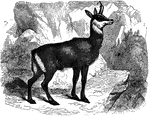
Chamois
"The horns are six or seven inches long, the body about three feet three inches, and the height at the…

Spring-Boc
"Is perhaps the most graceful and the most beautifully varied in its colors, of all the antilope. imagination…
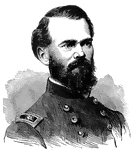
General James B. McPherson
"General McPherson, born in Sandusky, Ohio, November 14th, 1828, died near Atlanta, Ga., July 22nd,…
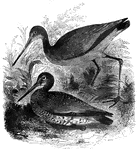
Black-Tailed Godwits
The black-tailed godwit measures about sixteen inches in length, and is found throughout Europe during…

Fort Putnam
"Interior of Fort Putnam. This little sketch is a view of the remains of the casemates, or vaults, of…

Gwyniad
"A lake fish of Northern Europe, ten to twelve inches long; it is gregarious, and approaches the shores…
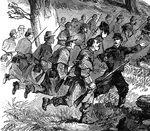
Battle of Mill Spring
"Battle of Mill Spring, on the Cumberland River, near Jamestown, between a confederate force, 8,000…
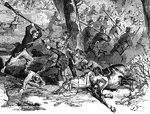
Battle of Mill Spring
"Battle of Mill Spring, on the Cumberland River, near Jamestown, between a confederate force, 8,000…

Battle of Mill Spring
"Battle of Mill Spring, on the Cumberland River, near Jamestown, between a confederate force, 8,000…

Hobkirk's Hill
"View at the Spring; Hobkirk's Hill. It is at the hed of a ravine, scooped out of the northeastern slope…
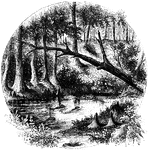
Eutaw Spring
"Eutaw Spring, where there was a conflict during the American Revolution."—Lossing, 1851
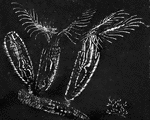
Plumatella
"Their shells are usually of a leathery texture, nearly transparent, and usually spring from a root-stalk…

Chrysalis of the Luna Moth
"Among the larger and more splendid moths of our own country is the Luna Moth, or Green Emperor Moth,…

Luna Moth
"Among the larger and more splendid moths of our own country is the Luna Moth, or Green Emperor Moth,…

Caterpillar of the Luna Moth
"Among the larger and more splendid moths of our own country is the Luna Moth, or Green Emperor Moth,…

Hedgehog
"Hedgehog is a quadruped distinguished by having the body covered with spines instead of hair. The skin…
Bones of the Foot
"The foot is built in the form of a half-dome or half-arch. This is to afford a broad, strong support…
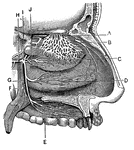
Nerves of the Nostril
"A, branches of the nerves of smell; B, nerves of touch to the nostrils; E, F,…

Tower in Northamptonshire, England
"Saxon Architecture was the style of architecture in use in England from the time of its conversion…
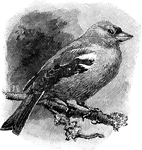
Chaffinch
A common European bird whose pleasant short and often repeated song is haerd fro early spring to the…

Click Beetle
A type of beetle that when placed on it back, will spring up in the air onto its feet, producing a clicking…
Stock, top view
"The parts are the butt, A; small, B; magazine well, C; barrel bed, D; air chamber, E, which reduces…
Stock, right side view
"The parts are the butt, A; small, B; magazine well, C; barrel bed, D; air chamber, E, which reduces…

Botfly Larva
"After attaching themselves to the walls of the stomach, the botfly larva are nourished by the blood…

Mature Botfly
"After attaching themselves to the walls of the stomach, the botfly larva are nourished by the blood…

Hop Louse
"Hop louse which lives on the plum tree in the late fall, winter, and early spring until the hop vines…
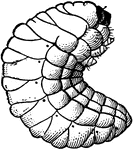
Pea Weevil
"The pea weevil is often found in peas in its larval state during summer and autumn, as a pupa in winter,…
Dynamometer
"The simplest way of measuring a force is to use a dynamometer, of which the spring-balance is a familiar…
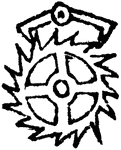
Escapement
"A crank which regulates the motion of the chief or escapement wheel of a train of clock-work worked…

Pluto, Persephone, and Mercury
"Mercury was sent, accompanied by Spring, to demand Persephone of Pluto. The wily monarch consented,…

Well Water
How the well often becomes impure and carries disease. A well near a barnyard or cesspool is likely…

Lotus Design
Very much resembles our pond lily with the exception that the color is of a brilliant purple on the…
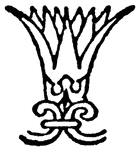
Lotus Design
Very much resembles our pond lily with the exception that the color is of a brilliant purple on the…

Lotus Design
Very much resembles our pond lily with the exception that the color is of a brilliant purple on the…

Lotus Design
Very much resembles our pond lily with the exception that the color is of a brilliant purple on the…

